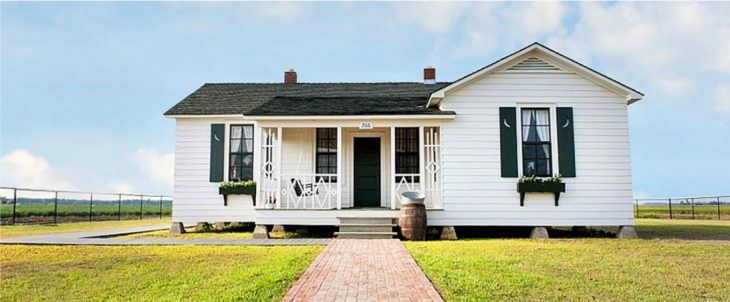Joanne Cash to host event at Cash family home in Dyess
by November 1, 2022 11:03 am 1,135 views

The restored Cash home in the Dyess Colony.
Arkansas Heritage Sites at Arkansas State University will host “Back Home with Joanne Cash Yates,” on Saturday (Nov. 5), in front of the Cash family home at the Historic Dyess Colony in Dyess.
The event will feature a performance by Joanne Cash Yates, sister of the late Johnny Cash, in celebration of her role in restoring the Cash family home, as well as the dedication of a new plaque recognizing the home’s listing in the National Register of Historic Places, said Dr. Adam Long, Heritage Sites director.
Following Yates’ performance, the home will be open for visitors. Admission is free. Those attending are invited to bring a chair and a picnic lunch.
“This celebration will also be an opportunity for the public to join in the ongoing support of the Historic Dyess Colony: Johnny Cash Boyhood Home,” Long said. “We will announce our new friends program, the Dyess Colony Circle, which will invite individuals to join a community committed to preserving our musical heritage.”
How the Cash family came to this desolate spot in rural Northeast Arkansas was a common story during a harsh bit of history. Drought, sporadic floods, and the Great Depression decimated family farms in the early 1930s. President Franklin Roosevelt started what was then called a socialistic plan to help many of these farmers in eastern Arkansas.
Ray and Carrie Cash brought their family to the Dyess Colony in 1935, according to historians. The Cashes moved to Dyess with their five children, Roy, 13; Louise, 11; Jack, 5; J. R., 3; and Reba, 1. Joanne and Tommy were born in Dyess.
Former Heritage Sites Director Dr. Ruth Hawkins previously told Talk Business & Politics Joanne and Tommy Cash were crucial to the restoration of the home. The siblings provided project leaders with every single detail of the home. ASU began restoration on the Cash childhood home in 2011. The dwelling was restored to its original condition, and an administrative building built into the old Colony theatre. The project cost about $3.5 million.
